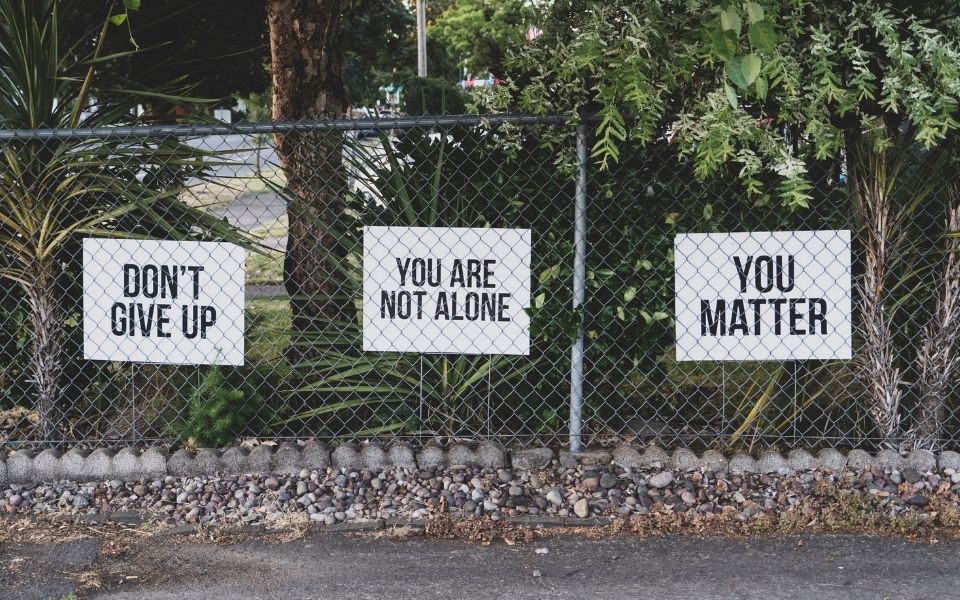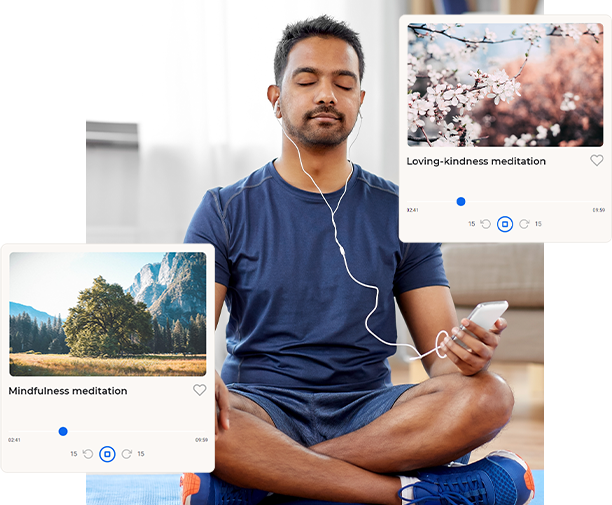Body dysmorphia or body dysmorphic disorder is a mental health condition wherein a person starts perceiving one or more flaws in their physical appearance. Often, this involves developing intrusive thoughts, anxieties, or fears about one or more aspects of their looks or body parts they believe must be fixed.
The condition may make the sufferer witness severe negative impacts on their day-to-day lives, as most of the time, they keep trying to alter the flaws they find in their appearance. What comes to the rescue is some thoughtful and helpful measures that help you cope with the condition leading you to beat body dysmorphia. In this article, you’ll learn how you can treat body dysmorphia through different self-help techniques and professional help if needed.
How to Beat Body Dysmorphia
1. Identify Your Problems and Concerns
It might seem a bit intimidating to think about body dysmorphia. However, experts recommend that just identifying your problems and concerns yourself is a good start, to begin with. If you find yourself struggling, the key is to acknowledge that something might be wrong. Once you accept that you’re struggling, you give yourself a chance to advance towards the treatment and self-healing solutions to help you overcome body dysmorphia. When you are concerned about the problem, whether about yourself or a loved one, the best thing you can do is connect with a counselor or therapist who specializes in the treatment of body dysmorphia
Like all mental health challenges, it’s often harder to solve our problems since our problems usually begin with thinking. It’s helpful to have a professional or a trusted friend be our sounding board with our thoughts. The goal is to have someone object to your thinking with a new thought pattern to help you model better thinking habits so you can view your body in a whole new light.

2. Spend Time with Loved Ones
Body dysmorphia brings out feelings of insecurity about one’s physical appearance, which often leads to choosing self-isolation. However, loneliness only makes things worse as it negatively affects your mental health. It also increases the risk of showing impulsive behaviors that can be harmful. Lean on your friends and family for seeking support instead of hiding your emotions.
Don’t feel comfortable seeking immediate professional assistance or aren’t sure about the gravity of the situation? Consider talking to a loved one is always going to help. Know that some family members aren’t always as well trained as a professional at providing emotional care, though. You may notice that you open your heart to a loved one only to observe that they don’t say the right thing to you. Look at them empathetically in this case. Not everyone knows how to meet another person’s emotional needs. However, that doesn’t mean they love or support you any less
3. Monitor Your Habits
Begin by asking yourself if you can avoid certain habits consuming a significant share of your time. For example, you can decide to go to the gym once a day instead of twice; you can ask yourself whether you can spend less time getting ready and head out quicker than before. You can also ask similar questions about yourself from someone else who understands you better. Whenever you speak your heart out, always be honest and open with your expressions and discussion. Make sure to be non-judgmental about your concerns and never blame yourself when making a statement. Keep your habits in check by showing yourself some concern over your actions. You can still live a healthy life, but it’s all about balance. Eating a balanced diet and daily exercise will help you achieve your body image goals without obsessing over them.

4. Consult a Nutritionist About Body Dysmorphia
You don’t need much evidence to state that your diet and eating habits affect your physical health and mental well-being. Those suffering from body dysmorphia are quite likely to develop eating disorders, which can cause many health problems. Eating things that nourish you helps in preventing the adverse effects of body dysmorphic disorder.
To determine the food items that work best for your body, it’s a great idea to consult a nutritionist. An expert professional will help you craft a healthy meal plan that suits your specific needs and tastes. However, remember that this step is to help you prevent any drastic alterations in your diet. Stick with a meal plan that gives you the energy and nutrients you need. Doing this, you can assure you’re on the right path. The goal isn’t to achieve a specific weight but to live a healthy lifestyle that works well.
5. Indulge in Physical Exercise
Doing physical exercise as a part of your morning routine works on your body and shape while also improving your mental health. The fact that exercise promotes the release of endorphins in your brain reduces pain and brings out feelings of pleasure. Additionally, it improves your cardiovascular health while also keeping you in shape. It may be a gradual process, but you would surely be delighted in just a matter of few days when it comes to observing positive changes in your mental state.
Consider trying a form of exercise that you feel comfortable with. It can range from cardiovascular activities like running, walking, cycling, yoga, or aerobic dancing. When you do exercises you love, you’ll be more likely to commit to a schedule. The goal isn’t to overdo exercise to achieve your goals. The goal is to stick with a daily routine for 30-60 minutes a day that you enjoy. Notice how good it feels to move the body, especially if you spend most of your day at a desk.

6. Maintain a Daily Journal About Body Dysmorphia
Writing your thoughts down and maintaining a daily journal is a fantastic way to express yourself and your in-depth emotions without acting on them. It’s not wise to act on your feelings of distress or anxiety. That’s why maintaining a daily journal works wonders in helping you to release all that stress. You won’t be engaging in any risky behavior. The fact that journaling allows you to become aware of your thought patterns will help you notice when your thinking leans negatively.
You can choose to write in a mindfulness journal to help you practice mindful living, or you can write in a gratitude journal to help you learn how to be grateful for the body you have. Body dysmorphia might result in you not practicing mindful eating or body appreciation. Journal prompts might help guide your process of sharing your thoughts to help lead you on track with positive thinking.
7. Use Meditation to Beat Body Dysmorphia
Meditation is a healthy way to combat body dysmorphia. The idea is to focus on the present moment instead of swaying between the past and the future. As you follow a guided body scan meditation, you’ll notice and identify the sensations you feel throughout your body. You might notice thoughts surfacing (that’s normal). Instead of reacting to a thought or following it along, place awareness as the thought arises and disappears. You’ll want to close your eyes and focus on your breathing. The goal isn’t to empty your mind but to realize that you are not your thoughts. Spend a few minutes breathing in and out while focusing on mindful breathing.
The next step is to make yourself more aware of the rest of your body and feel things without being judgmental. Tell yourself to let go of negative thoughts and relax whenever you start dwelling on certain feelings. Do this for a few minutes, gradually increasing the time you spend on meditation as you grow more and more comfortable with the whole process. The chief goal is to disconnect from the thoughts that make you create a negative body image. Your thoughts cause you to perceive your body negatively; you can change your thoughts to view them differently. Consider repeating positive affirmations after your guided meditation. You can find body scan meditations and more when you download the Declutter The Mind app.

8. Reduce Negative Predictions
Having body dysmorphia may cause you to default to specific pessimistic predictions about how a situation or particular event will go. You may even start imagining the worst: that the crowd will laugh at you or that you’ll end up sitting alone as nobody would like to associate themselves with you because of the flaws you see in yourself. However, the reality is typically not that distressing or destructive. Most people won’t mock you for your body. And if they do, you might notice other people jumping in to stand with you.
The solution is to try noting down all those fears in your journal every time you catch yourself flowing with anxiety. Identifying your worst fears will make it easier to come up with a better and realistic outcome. Ditch thinking that everyone is privately talking about you, instead contemplate, “maybe today I will chat with someone new, and we’ll engage in a friendly or interesting conversation. I might even make a new friend.” However, make sure you don’t start going to extreme thoughts in a positive direction too. Otherwise, you may end up disappointing yourself if things don’t turn out as great as you hope. Instead of thinking that everyone at the party will tell you that you’re looking beautiful, consider making positive yet small expectations.
Building up expectations in your head is the direct result of thinking. And that thinking is what causes you to experience negative emotions about your mind and body.
9. Try Cognitive Behavioral Therapy
Cognitive Behavioral Therapy is the only psychological treatment for body dysmorphic disorder. The focus of CBT therapy is to alter the thoughts and behavioral patterns of the patient that arise due to the underlying condition. A therapist will identify situations that make you anxious, further developing healthier and better coping strategies.
The therapy helps you step outside yourself and look at your body through a more forgiving and appreciating perspective. Gradually, the expert guides you through more complex and challenging situations to rewire how you respond to such triggers. You’ll start identifying avoidance behaviors and compulsive actions.
Often, people with body dysmorphia suffer from underlying traumas that stem from childhood, bullying, or sexual assault, which can cause people to view their bodies differently. Treating those traumas with CBT therapy can be a great and healthy way to help you move forward to having a positive relationship with your body again. Don’t be afraid of seeking professional help by finding a therapist. Having someone help you cope with challenging events is what brings you closer to healing. And the healing process can be an enriching experience.

10. Medication
The Food and Drug Administration hasn’t explicitly approved any medications for treating body dysmorphia, but certain medicines may benefit patients. Serotonin reuptake inhibitors are pretty effective for helping people struggling with body dysmorphic disorder when it comes to improving their overall quality of life by alleviating symptoms of depression and anxiety. According to medical experts, therapy combined with a few medications works amazingly well for fighting body dysmorphia.
Some common medications that help treat the condition include fluvoxamine (Luvox), escitalopram (Lexapro), fluoxetine (Prozac), sertraline (Zoloft), clomipramine (Anafranil), and paroxetine (Paxil). It may take a few weeks or even several months to witness a visible improvement in your symptoms, but the medicines can be helpful. Psychiatrists and physicians associate body dysmorphia with certain chemical irregularities in the brain, so they usually prescribe antidepressants first to see if they can help you cope with body dysmorphic disorder.
Conclusion
Although there’s no magical fix to a medical condition like body dysmorphic disorder, steps like meditating, journaling, exercising, mindful eating, medication, and even CBT therapy, when needed, can together help you beat body dysmorphia. Anyone can head towards living a wholesome and healthy life while being proud of their unique body shape and size. Your body encases the wonderful you inside of it, so don’t let negative thoughts or toxic people get in the way of celebrating your uniqueness.




